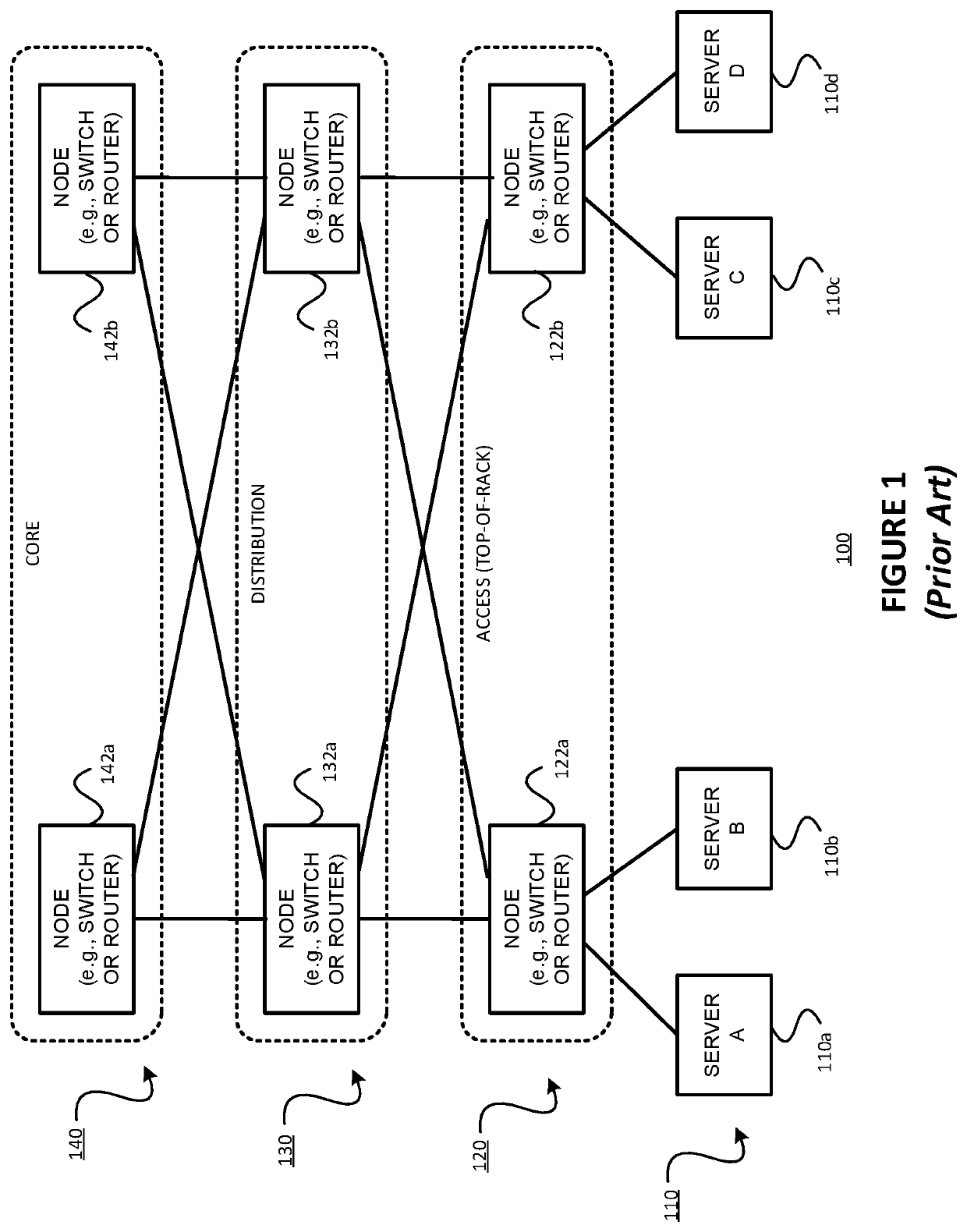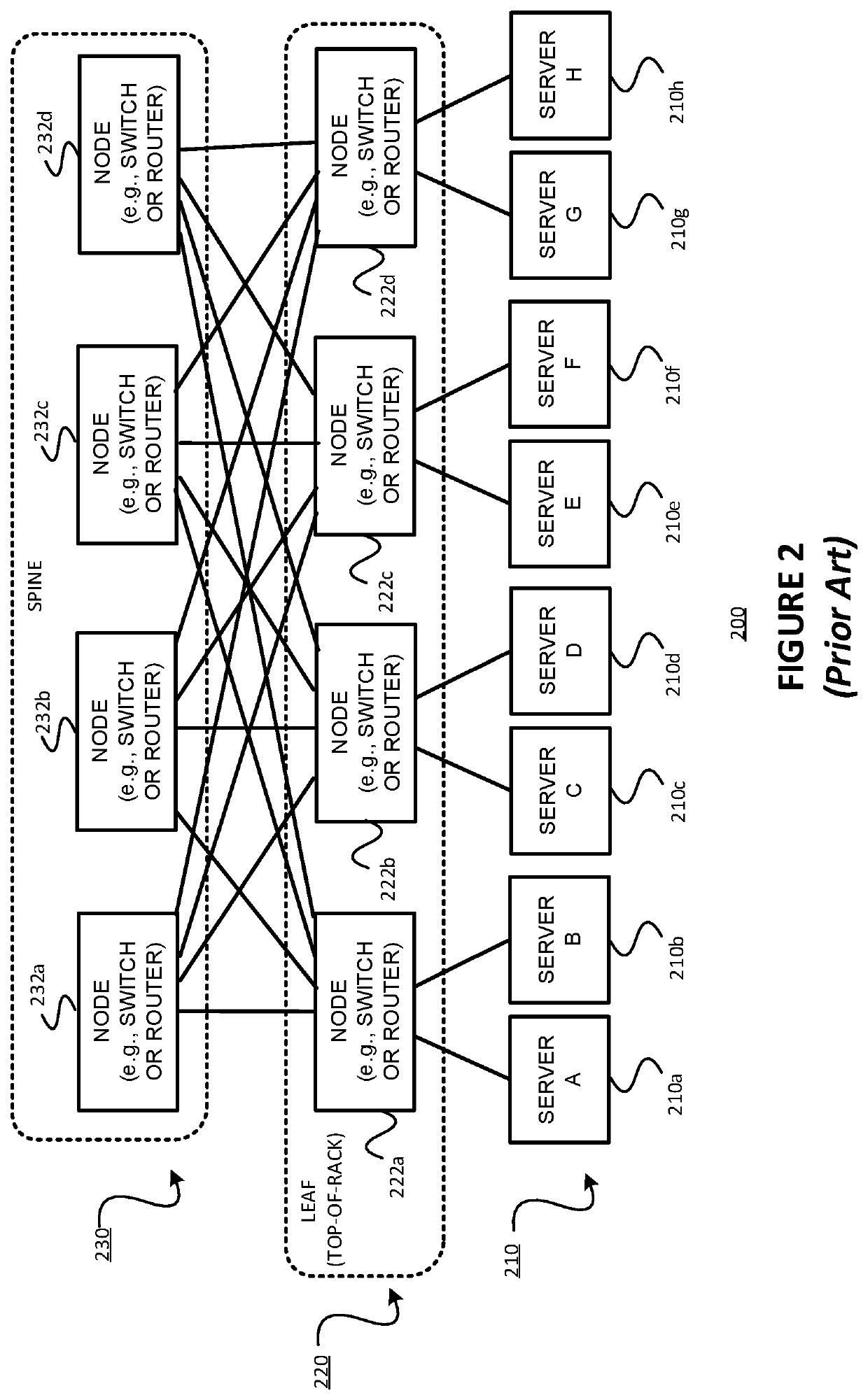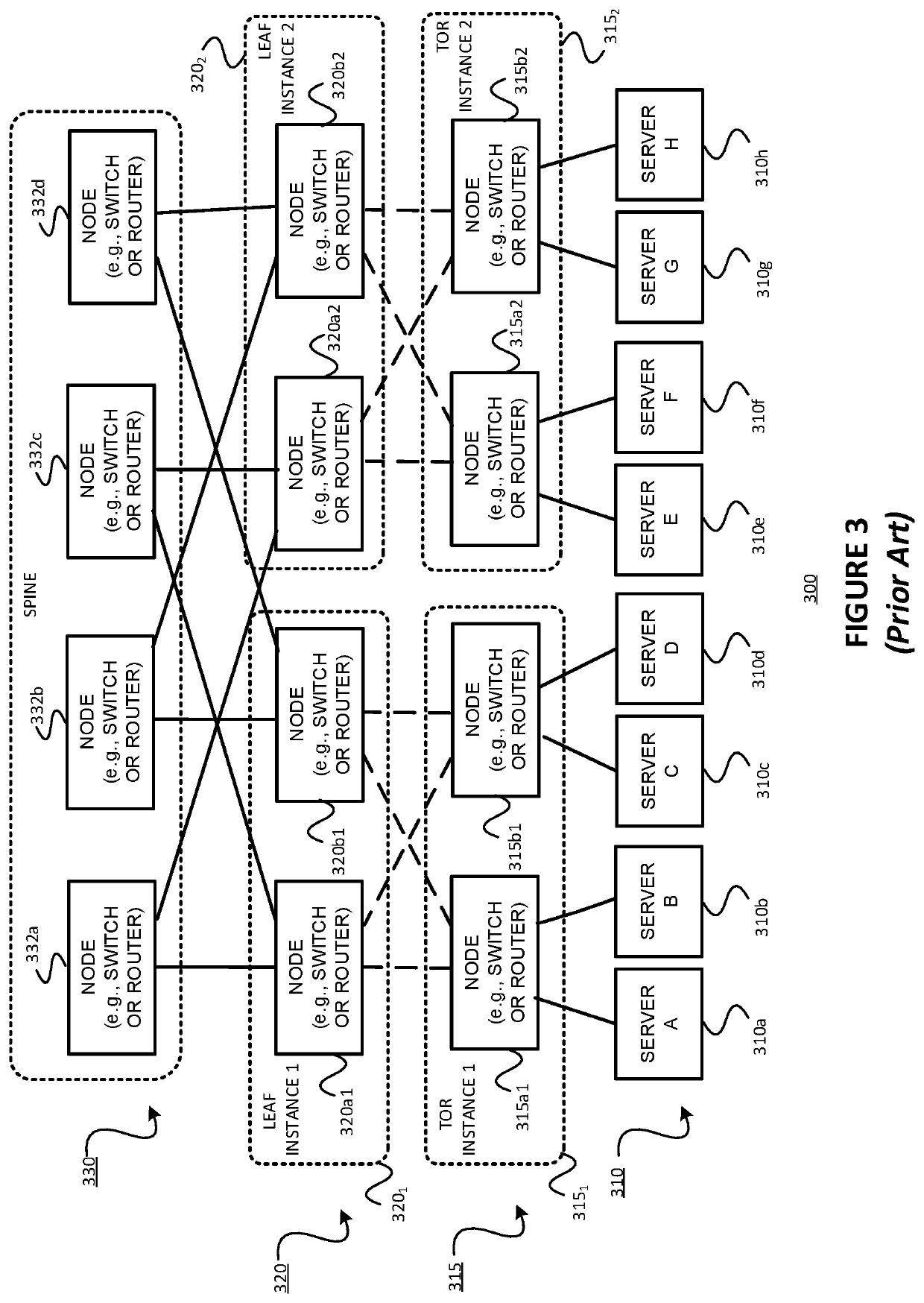Reducing or eliminating routing microloops in networks having a clos topology, such as data center clos networks employing the exterior border gateway protocol (EBGP) for example
a topology and network technology, applied in the field of networks having a clos topology, can solve the problems of inconsistent latency, unsuitable for many current data centers, limitations on scalability and limitations of the spanning tree protocol (stp), etc., and achieve the effect of avoiding discarding or otherwise dropping packets
- Summary
- Abstract
- Description
- Claims
- Application Information
AI Technical Summary
Benefits of technology
Problems solved by technology
Method used
Image
Examples
Embodiment Construction
[0044]The present disclosure may involve novel methods, apparatus, message formats, and / or data structures for reducing or eliminating routing micro-loops in networks having a CLOS topology, such as data center CLOS networks employing the exterior border gateway protocol (eBGP) for example. The following description is presented to enable one skilled in the art to make and use the described embodiments, and is provided in the context of particular applications and their requirements. Thus, the following description of example embodiments provides illustration and description, but is not intended to be exhaustive or to limit the present disclosure to the precise form disclosed. Various modifications to the disclosed embodiments will be apparent to those skilled in the art, and the general principles set forth below may be applied to other embodiments and applications. For example, although a series of acts may be described with reference to a flow diagram, the order of acts may diffe...
PUM
 Login to View More
Login to View More Abstract
Description
Claims
Application Information
 Login to View More
Login to View More - R&D
- Intellectual Property
- Life Sciences
- Materials
- Tech Scout
- Unparalleled Data Quality
- Higher Quality Content
- 60% Fewer Hallucinations
Browse by: Latest US Patents, China's latest patents, Technical Efficacy Thesaurus, Application Domain, Technology Topic, Popular Technical Reports.
© 2025 PatSnap. All rights reserved.Legal|Privacy policy|Modern Slavery Act Transparency Statement|Sitemap|About US| Contact US: help@patsnap.com



